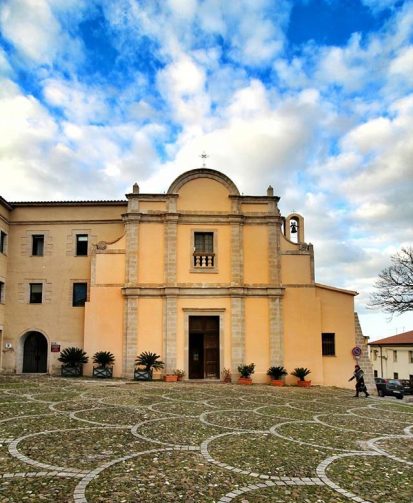The convent complex of St. Francis traces its roots back to the second half of the 16th century, when the Friars Minor Observant left the church of Loreto to build a new site on the outskirts of Ozieri. Construction of the convent lasted for nearly two centuries, while the church was consecrated as early as 1575.
Between 1691 and 1696, the complex underwent major expansion and renovation work in conjunction with its use as a Regional College for the training of missionaries leaving for foreign countries. The church was also renovated during those years.
Following the Rattazzi law, the convent was suppressed in 1867 and turned first into barracks, then into a school building. Only in 1936 was the church returned to worship.
The building has a single nave plan with side chapels. The interior houses an extraordinary polychrome wooden altar, painted in green and pure gold: one of the largest and most valuable in Sardinia. Made after 1691 thanks to the contribution of the noble Arca family (whose coat of arms with the double-headed eagle is visible on the top), it represents an important example of island Baroque art.
Contemporary in taste, however, are the frescoes painted in 1979 by Polish painter Eugene Bardsky.
The convent retains a cloister porticoed on three sides, with pillars and cross vaults that once connected the different rooms on the ground floor – kitchen, refectory and
cellarium
. On the upper floor were the chapter house and dormitory. Among the few surviving artistic works is the late 18th-century fresco on the vault of the current lecture hall, depicting St. Bonaventure surrounded by allegories of the arts and sciences.
In 1982, a major renovation of the complex, now home to the San Francesco Cultural Center and the Ozieri Municipal Library, was carried out.









